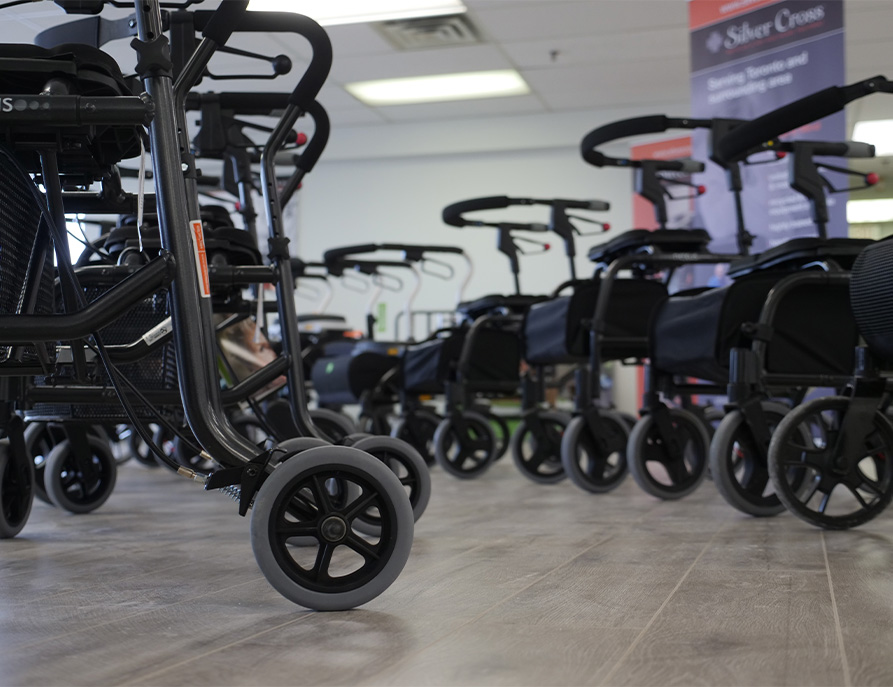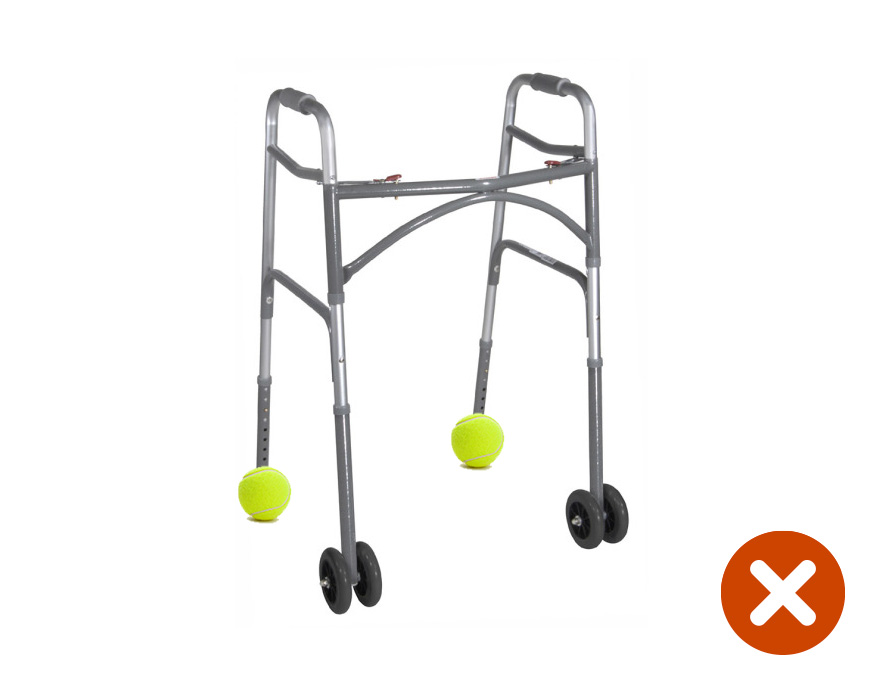FAQs: Walkers and Rollators
How much does a walker or rollator cost?
Walkers and rollators typically start at $250 and can cost $550 or more. However, the price varies significantly based on the user requirements. In Ontario, the Assistive Devices Program (ADP) has specific pricing details that ADP vendors can provide to you. Silver Cross sells some models strictly under ADP whereas others are only available as cash and carry options.
Can I use my walker or rollator to go up and down stairs?
Do not use your walker or rollator to go up and down the stairs. If you need help going up the stairs, a stair lift may be a good option. Do not use your walker or rollator on an escalator. You should locate an elevator rather than use an escalator.
Can I buy a used walker or rollator?
You may be able to find gently used walkers or rollators for sale. In some places, funding is only available for new equipment. It’s best to check with your local dealer for information on this.
Can I rent a walker or rollator?
Because walkers and rollators are not very expensive, it may be challenging to find rentals, but your local dealer may offer rental equipment if you require the aid for short-term use.
Is funding available for walkers or rollators?
Funding programs for walkers and rollators are available in many states and provinces across the U.S. and Canada. In the U.S., Medicare part B covers walkers and rollators when it’s medically necessary and prescribed by a doctor. Community and other non-profit organizations may offer financial assistance as well.
In Canada, funding is available provincially and eligibility requirements may differ from province to province. There are programs such as Ontario’s Assistive Device Program (ADP). Walkers and Type 2 rollators cannot be purchased through ADP and are therefore not reimbursed. Type 3 rollators are ADP-eligible to be reimbursed 75%. Community and other non-profit organizations may offer financial assistance as well.
Speak to your local dealer for help with funding questions and to see if you qualify. They are familiar with all the local funding options available to you.
Why do people put tennis balls on their walkers?
Some people believe that tennis balls help the walker glide easier and keep the legs from damaging the hardwood or catching on the carpet, but this practice is not recommended. The tennis balls are unsafe because they can make the walker unstable. Walker skis or walker glides are relatively inexpensive and can replace the need for tennis balls. Made from hard plastic, they tend to last longer and provide a smooth, quiet glide over most surfaces.
Which walker or rollator is the best?
The best walker or rollator is dependent on your individual needs. The best way to know which walker or rollator is right for you is to visit a local home healthcare equipment dealer and try them out. Make sure to call them before you visit to confirm they have options available in their showroom to test.


Get a quote!

